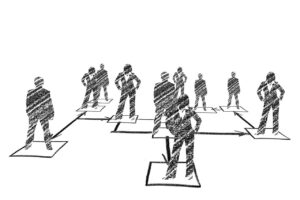Disney has a strategy to increase its bottom line and squeeze more revenue out of its most iconic assets – price people out of its theme parks. This definitely seems counterintuitive, but it actually makes a lot of sense when explained. On its face, this sounds ridiculous, except it does seem to have a lot of potential and that’s why the executives are making some very bold moves.
Why Disney is Purposely Pricing People Out of its Parks
Disney has a serious problem with its parks – they are just too popular and that means they’re overcrowded. Anyone who’s been to its theme parks, particularly over the last several years, has most definitely noticed this. The predicament is most pervasive in Orlando, where ride wait times have gone up to as much as 420 minutes or 7 hours. You read that correctly. Just last week, its newest and most anticipated attraction, Rise of the Resistance, recorded a wait time of seven hours. This, despite the fact the experience opened in December 2019, nearly three years ago.Be mindful of competitors. If they are raising prices, it’s easier for you to do so too. Don’t forget to evaluate how your customers will react (fully accept the increase, stop, or lower purchases) as well as the possibility of maintaining price to generate higher volume (stealing customers from rivals). If the competition holds steady on prices, there is less opportunity for a hike. —Harvard Business ReviewAnd, it’s not just the latest and greatest rides and attractions either. Some of its oldest staples routinely experience wait times in excess of an hour, even two or more. What’s more, wait times for sit-down restaurants can easily be two or more hours for anyone without reservations. (By the way, those reservations must be made three to six months in advance.) Just these anecdotal figures should tell you something – the parks have way too many people visiting. In fact, exiting Main Street in the Magic Kingdom after the fireworks show can take up to two hours to get from the park exit to the parking lot on busy days (a twenty-minute trek when crowds are super light). Of course, anyone who looks at these figures would think that Disney would be very happy with its premium capacity. But, as executives have explained on various earning calls, their per capita spending in the parks is somewhat paltry – particularly among annual passholders. Annual passholders are a problem for Disney because they present a conundrum. While they pay a premium for their privileges, they spend relatively little money in the parks. Conversely, families and couples traveling from out of state or from international destinations spend quite a bit of money in the parks on top of the pricey admission. In other words, annual passholders come in through the gate, spend a few hours enjoying rides and attractions, and then leave. Meanwhile, couples and families making dedicated trips plunk down a lot of money on things like hotels, souvenirs, snacks and dining, and Genie Plus (a paid skip-the-line service), as well as special experiences.



